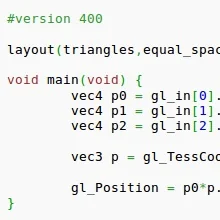Khronos Publishes Finalized glTF 2.0 Specification For Portable 3D Assets

The glTF 2.0 update is big for the real-time delivery of 3D assets. The big change with glTF 2.0 is support for Physically Based Rendering (PBR) rather than being tied to GLSL shaders. glTF 2.0 still has an extension for supporting OpenGL shaders, but by using the new PBR approach, glTF models can now be imported into Direct3D or Metal applications, or basically any graphics rendering API with now not relying upon GLSL shaders. PBR also allows for higher-quality materials.
Other improvements beyond PBR definitions and making it graphics API neutral is support for morph targets and improvements to binary glTF and other performance work.
Among the items Khronos will be exploring for future glTF revisions are mesh compression, progressive geometry streaming, point clouds, a lighting extension, and extensions for other APIs and language specifics. For mesh compression they are looking at Google's Draco work, for geometry streaming is Fraunhover SRC, and for the compression they are looking at the Basis format from Binomial.
Along with the updated specification, Khronos will be publishing their source-based validation tool for the 2.0 specification and other open-source tooling updates. The glTF format for distributing 3D assets is quite exciting and continuing to be more broadly supported, even with Microsoft planning to make use of glTF in future 3D creation programs. Oculus, NVIDIA, Adobe, Autodesk, Google, and Blender are among other organizations employing glTF.
More details on glTF 2.0 should be appearing now or in the very near future at Khronos.org.
Separately, Khronos also announced today that Logitech has joined the organization as a contributing member.
Add A Comment

